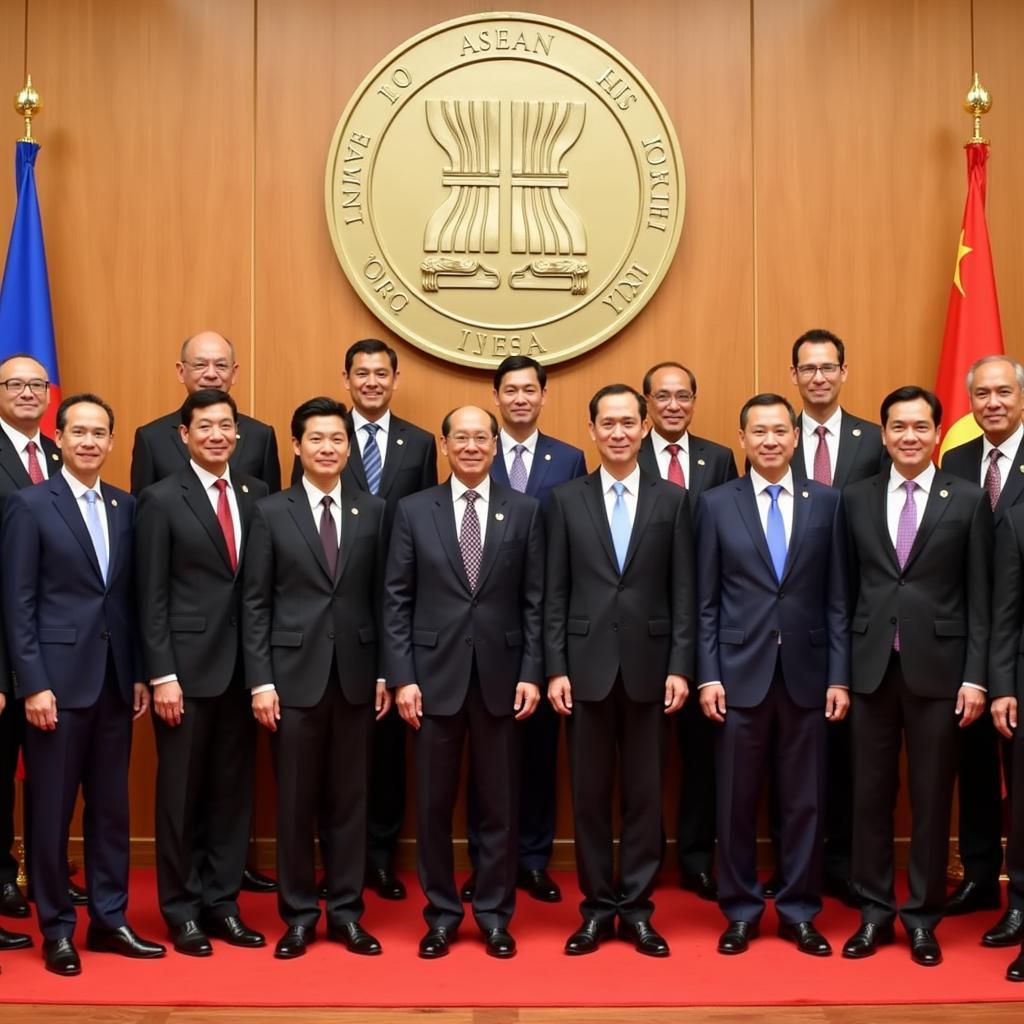The year 2017 marked a significant period for ASEAN integration, witnessing both notable achievements and persistent challenges. As the ASEAN Economic Community (AEC) continued its implementation, member states grappled with economic disparities, political uncertainties, and the need for deeper regional cooperation. This article delves into the key developments and obstacles encountered in ASEAN integration throughout 2017.
Economic Integration Gains Momentum
One of the primary focuses in 2017 was further integrating the ASEAN economies. Significant progress was made in liberalizing trade and investment flows, with the majority of tariffs within the region eliminated. The implementation of the ASEAN Trade in Goods Agreement (ATIGA) and the ASEAN Comprehensive Investment Agreement (ACIA) contributed to a more business-friendly environment.
Furthermore, 2017 saw efforts to enhance financial integration within ASEAN. Initiatives like the ASEAN Banking Integration Framework (ABIF) aimed to facilitate greater cross-border banking activities. Additionally, the development of the ASEAN Capital Markets Forum (ACMF) promoted regional capital market development and integration.
 ASEAN SME Workshop 2017
ASEAN SME Workshop 2017
Addressing the Development Gap
Despite progress in economic integration, ASEAN continued to grapple with a significant development gap among its member states. This disparity posed a challenge to achieving inclusive and equitable growth across the region. To bridge this gap, ASEAN implemented initiatives like the Initiative for ASEAN Integration (IAI) Work Plan III, which focused on narrowing the development divide and promoting equitable development.
However, challenges remained in effectively implementing these initiatives and ensuring that benefits of integration reached all segments of society. There was a need for stronger mechanisms to facilitate technology transfer, capacity building, and infrastructure development in less developed member states.
Political and Security Cooperation
2017 witnessed ASEAN’s continued efforts to enhance political and security cooperation among its members. The South China Sea dispute remained a pressing concern, prompting discussions on a Code of Conduct (COC) to manage maritime tensions. ASEAN also emphasized the importance of counterterrorism cooperation and cybersecurity, recognizing the transnational nature of these threats.
However, the lack of a unified stance on certain issues, particularly the South China Sea dispute, highlighted the challenge of achieving consensus within a diverse group of nations with varying interests. This underscored the need for ASEAN to strengthen its mechanisms for conflict resolution and maintain its centrality in regional security architecture.
 ASEAN Foreign Ministers' Meeting 2017
ASEAN Foreign Ministers' Meeting 2017
The Way Forward: Deepening Integration
While 2017 marked a year of progress for ASEAN integration, it also highlighted the need for continued efforts to deepen regional cooperation and address persistent challenges. Key priorities for the years ahead include:
- Enhancing economic competitiveness: Fostering innovation, promoting digital economy development, and facilitating greater movement of skilled labor within ASEAN.
- Narrowing the development gap: Implementing effective programs for infrastructure development, technology transfer, and capacity building in less developed member states.
- Strengthening political and security cooperation: Developing a unified approach to regional security challenges, enhancing mechanisms for conflict resolution, and promoting dialogue and cooperation on transnational issues.
- Promoting ASEAN identity and people-to-people connectivity: Fostering greater cultural exchange, educational collaboration, and tourism within the region.
Conclusion
ASEAN integration in 2017 demonstrated the commitment of member states to regional cooperation and economic progress. While challenges remain, the year witnessed significant strides towards a more integrated and prosperous Southeast Asia. By addressing the development gap, enhancing political and security cooperation, and fostering a stronger ASEAN identity, the region can continue its path towards deeper integration and a brighter future.
Do you have questions about ASEAN integration in 2017 or other related topics? Check out these frequently asked questions:
FAQ
- What were the key economic achievements of ASEAN integration in 2017?
- How did ASEAN address the development gap among member states in 2017?
- What were the major political and security challenges faced by ASEAN in 2017?
- What are the future priorities for deepening ASEAN integration?
- Where can I find more information about ASEAN integration and its impact?
For more insights on ASEAN integration, explore other relevant articles on our website, such as:
Need assistance with information or have specific inquiries? Don’t hesitate to contact us:
Phone: 0369020373
Email: [email protected]
We are available 24/7 to provide support and guidance. Visit us at our address:
Thôn Ngọc Liễn, Hiệp Hòa, Bắc Giang, Việt Nam.


